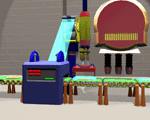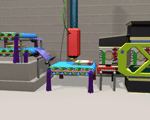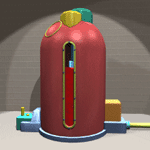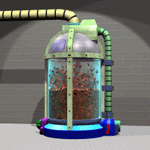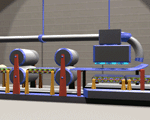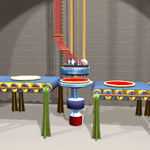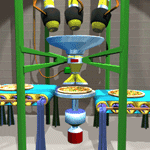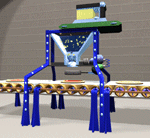Software Development Under Control


Customer: Anheuser-Busch / Metal Container Corp.
In the United States, the company holds a 48.8 percent share of U.S. beer sales. Worldwide, Anheuser-Busch's beer sales volume was 121.9 million barrels in 2005. The St. Louis-based company's subsidiaries include one of the largest U.S. manufacturers of aluminum beverage containers and America's top recycler of aluminum cans.
At Issue:
Anheuser-Busch subsidiary Metal Container Corp. (AB/MCC) manufactures billions of aluminum cans per year. Anything they can do to increase through-put or efficiency gets much attention at AB/MCC, and they are constantly implementing manufacturing best practices. One such practice is called Total Productive Manufacturing, which provides techniques to optimize factory output and minimize down time. AB/MCC made the decision to provide some means of training their top factory engineers around the world, in a fun, easy to digest manner. They thought that someone with experience in video games would be able to help.
The Solution:
Working directly with senior management at Anheuser-Busch Metal Container Corp.
in St. Louis Missouri, the concept of a training simulation was developed, and specifically
the format of a fictional pizza factory was created. TPM is Total Production Manufacturing,
but also Terrific Pizza Makers, the fictional company the players run. This simulation
was loaded up on to 30 laptops and taken around the world for on-site training.
The specific technologies used were: Microsoft Visual Basic 5.0, Microsoft Access,
WIN32 API, Multimedia API, 2D Animation.
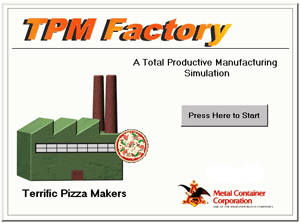


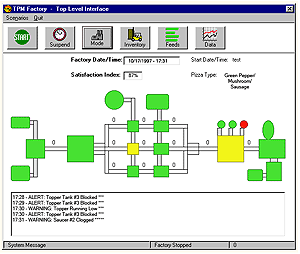
The main interface was similar to what they actually use to run their factories,
a graphical display that shows positions of various machines in the manufacturing
process, and a color status relating to the internal state of the machine.
From here the user could start or stop the factory, look at supply feeds, check
inventory, or review manufacturing and quality data.
Status and running messages also display here.
When the user clicks on any of the machines, they are taken to a lower level of
detail and are presented with the machine specifics. A graphical animation shows
the machine and its component parts working while the factory is in the run state.
Each machine has various components that have failure rates and servicing schedules,
all of which are maintained by this simulation. The machine on the right, a Dough
Extruder, has six main component assemblies, all of which animate, and all of which
affect quality or machine output.
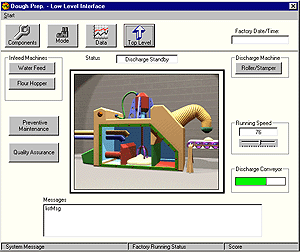
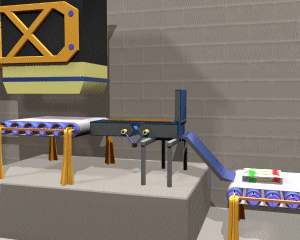
Each machine was animated and showed graphically the components at work. Shown at
left is the boxing machine, fully animated.
OBelow are the cells that make up the animation. As animated gifs were unavailable
in Visual Basic 5.0, animation had to be done the 'old-fashion' way of bitblitting.


Here are a selection of machines that were included in the factory. Starting at
the right and going clockwise are: Package Loader, Topper, Topping Tank, Cheeser,
Shrink Wrapper (center), Sauce Tank, Saucer, and Roller/Stamper.
Each machine was fully animated with sound effects and entertaining failures.
